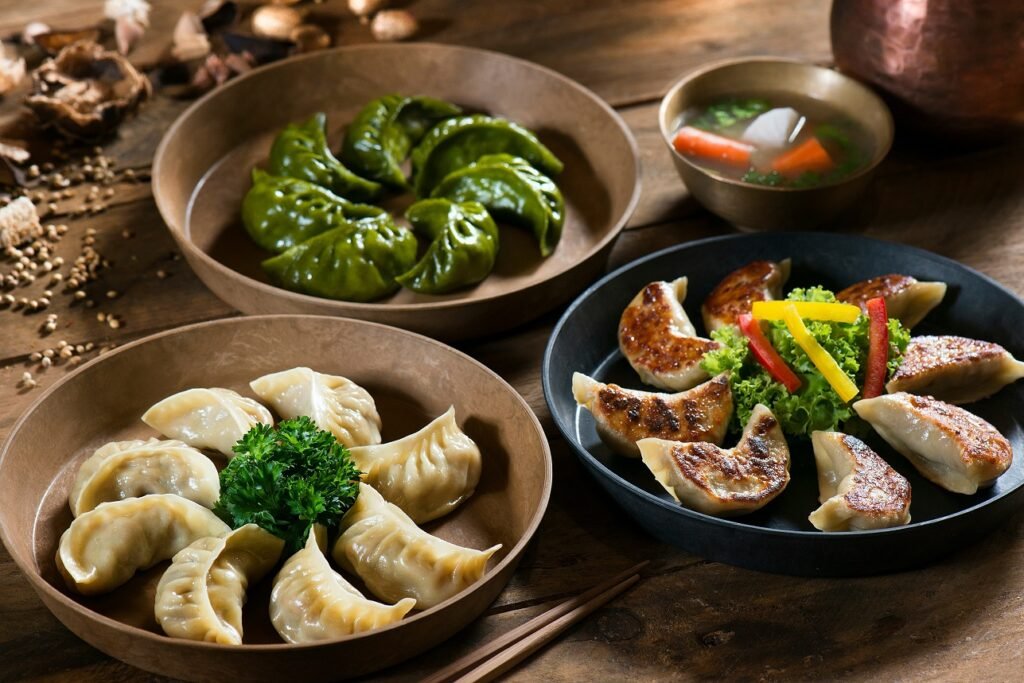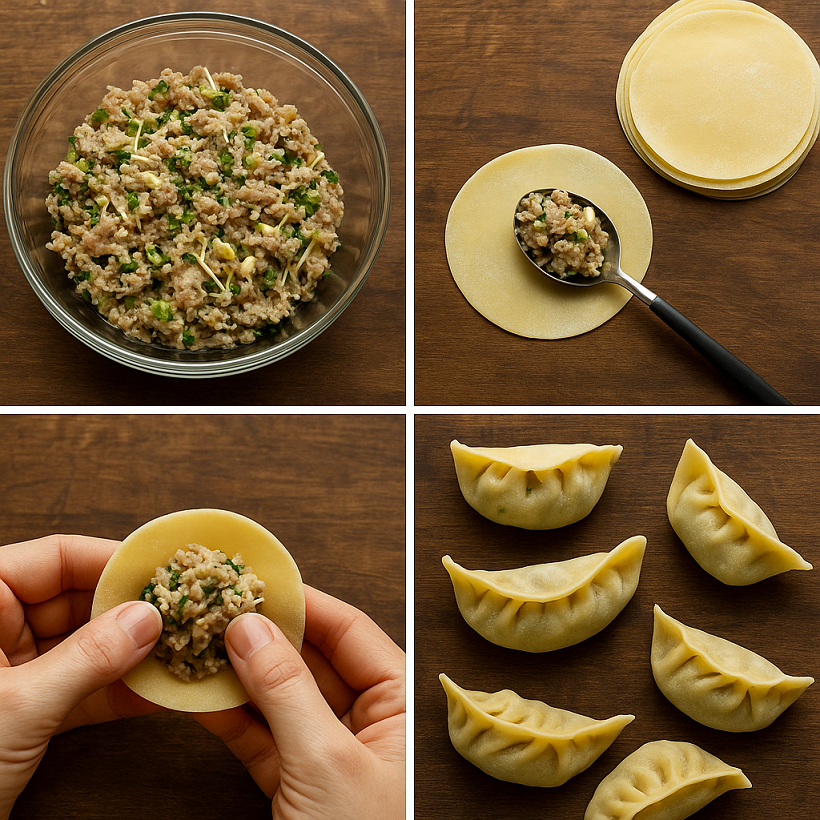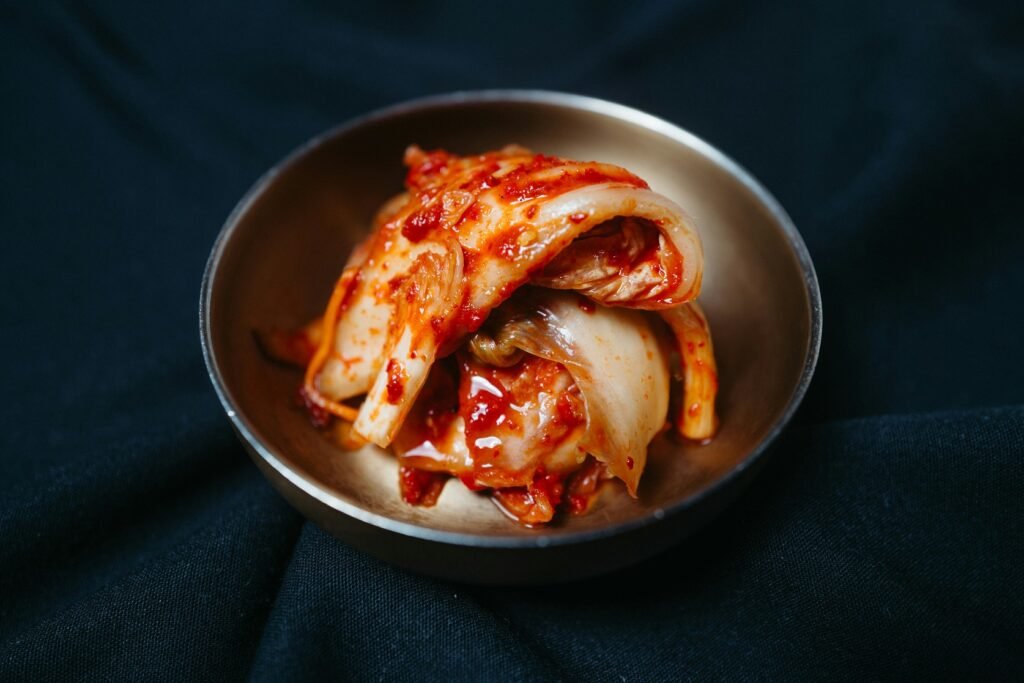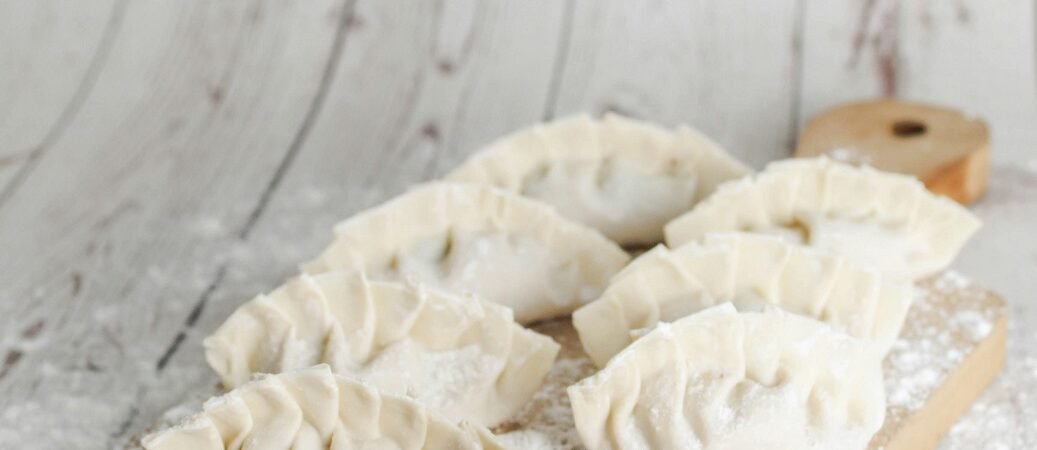Why Mandu is Great for Dieters
These dumplings combine lean pork, plenty of veggies, and optional tofu or glass noodles—creating a balanced, satisfying meal without excess carbs or fat. Wrappers can be made at home or conveniently sourced from your local supermarket.

Ingredients (Makes ~40)
Filling
- 400 g lean pork (ground)
- 200 g napa or green cabbage, finely chopped & lightly salted
- 100 g firm tofu, drained & crumbled
- 1 cup mung bean sprouts, blanched
- 1 small onion and 2 scallions, finely chopped
- 1 egg (binder)
- 1 Tbsp minced garlic, 1 tsp grated ginger
- 1 Tbsp soy sauce, ½ tsp sesame oil, ¼ tsp black pepper
- (Optional) ½ cup soaked glass noodles for extra chewiness.
Wrapper
- Mandu wrappers (found at many grocery stores)
- Homemade: mix 2 cups all-purpose flour + ½ tsp salt + ~½ cup warm water; knead, roll thin, and cut into rounds (8–9 cm)
Cooking
- Oil for pan-frying (optional), or steam / boil
How to Make Mandu

- Prep the filling:
Squeeze moisture from cabbage and sprouts. In a bowl, combine all filling ingredients and mix gently. - Assemble dumplings:
Place a small spoonful (≈1 tbsp) in each wrapper, moisten edges with water, fold & pinch securely. Folding styles vary—from half-moons to pleated pouches . - Cook:
- Steamed (jjin mandu): 10–15 min in bamboo steamer
- Pan-fried (gun mandu): fry briefly in oil, add water, cover, and steam until golden
- Boiled (mul mandu): simmer 5–7 min until they float.
- Serve:
With dipping sauce: soy sauce + rice vinegar + a touch of sesame oil and chili flakes.
Kimchi Mandu – Spicy Kimchi Dumplings

Why You’ll Love Kimchi Mandu?
Adding kimchi brings probiotics, tang, and spice—boosting gut health, metabolism, and flavor complexity. Ideal for dumpling soup (mandu-guk) or pan-fried bites.
Ingredients & Filling
- Use same filling as above, except:
- Replace pork with 250 g kimchi (finely chopped, well-drained)
- Add tofu, sprouts, onion, scallions, one egg, 1 tsp sesame oil + garlic.
Assembly & Cooking
Follow the same folding and cooking methods above. The fiery, tangy kimchi filling gives these a bold kick.
Nutritional Benefits
- Lean protein from pork, tofu, or kimchi provides muscle-supporting amino acids.
- Vegetables & sprouts add fiber, vitamins A/C/K, antioxidants, and prebiotics .
- Kimchi in kimchi mandu supplies probiotics that aid digestion and boost immunity; studies link regular consumption to improved gut flora, reduced inflammation, and weight support .
- Homemade wrappers allow control over flour quality and thickness, reducing unnecessary additives and enabling gluten-free options.
Tips for Healthier Mandu
- Let cabbage/sprouts drain well to avoid soggy filling.
- Choose lean pork or ground turkey, or make vegetarian versions using mushrooms, tofu, and glass noodles .
- Steam or boil instead of frying to cut calories.
- Freeze extras for quick, nutritious meals.
Serving Suggestions
- Mandu-guk: boil dumplings in light broth, then top with egg ribbons and scallions.
- Enjoy gun mandu with a side of cucumber salad (oi muchim) or kimchi for crunch and balance.
- Use kimchi mandu in a wholesome soup with seaweed and glass noodles.
Mandu isn’t just flavor-packed—it’s a well-rounded, comforting, and adaptable dish perfect for family meals and healthy eating. The addition of veggies, probiotics, and lean protein makes it ideal for anyone on a wellness journey.
About Mandu in Korea
In Korea, mandu (dumplings) are traditionally enjoyed during the colder months, especially in winter and around the Lunar New Year (Seollal). One of the most iconic dishes during Seollal is tteok-mandu-guk—a comforting soup made with rice cakes and dumplings, symbolizing new beginnings and good fortune for the year ahead.
Koreans also eat mandu during the Dongji (Winter Solstice), believing that warm, hearty foods help restore energy in the cold season. While mandu is enjoyed year-round, these seasonal traditions highlight how Korean food is closely tied to nature and cultural rituals.
